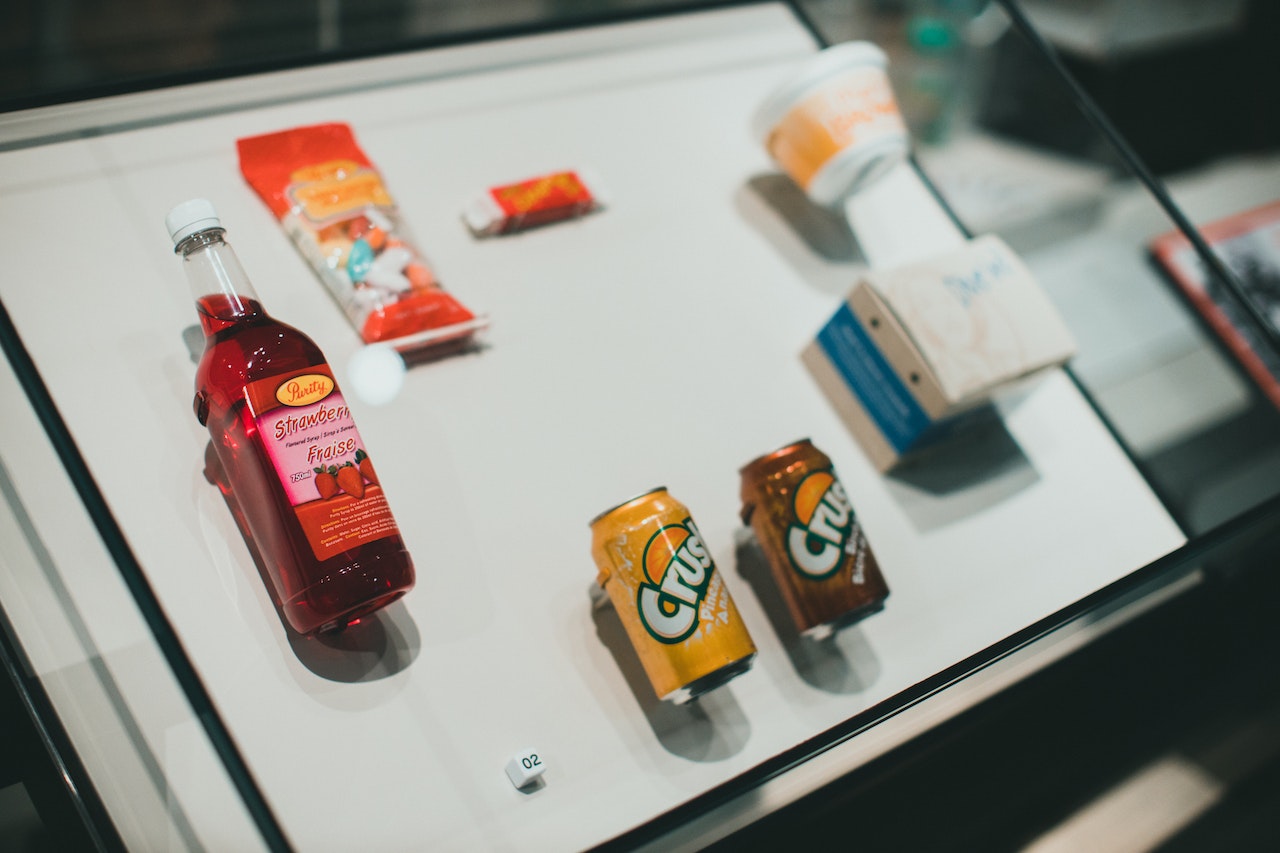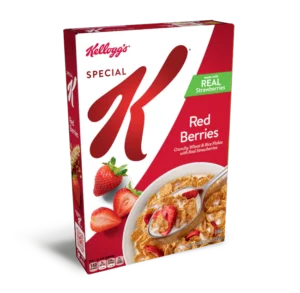Ozempic and other GLP-1 drugs are reshaping food, beauty, alcohol, and belonging. From snack sales to body ideals, marketers are rebranding around the “Ozempic Nation.”

Go ahead – it’s healthy!
If you watch the news as much as we do, you might have heard the FDA is considering a new definition of the word “healthy” in marketing processed foods.
We’ve been there – wandering the aisles of the grocery store, justifying a purchase of something we want because it has a “healthy” looking label, knowing deep down it’s just a bunch of processed junk in disguise. This got us thinking about those healthy labels, and what that means, so down the rabbit hole we decided to go.
Let’s begin at the beginning…
Turns out the history of food label regulations in the United States starts out more than one hundred years ago, though until the 60s it wasn’t required for manufactures to label nutrients.
1914: The U.S. Congress passes the first federal food and drug law, the Harrison Act, which prohibits the manufacture and sale of adulterated or misbranded food and drugs.
1938: The Federal Food, Drug, and Cosmetic Act (FFDCA) is passed, creating the modern system of food regulation in the United States. The FFDCA requires that all food labeling be truthful and not misleading, but does not define the term “healthy.”
1977: The FDA publishes a final rule defining the term “healthy” as it can be used on food labels. The definition is largely consistent with the 1969 proposal to establish a definition of the term “healthy” for use on food labels. The proposed definition limits the use of the term to foods low in fat, saturated fat, cholesterol, and sodium, and high in certain nutrients like vitamins and minerals.
1990: The Nutrition Labeling and Education Act (NLEA) is passed, requiring most packaged foods to bear nutrition labeling that includes information on total fat, saturated fat, cholesterol, sodium, total carbohydrate, dietary fiber, sugars, protein, vitamin A, vitamin C, calcium, and iron. The NLEA also includes provisions for the use of nutrient content claims, including the term “healthy.”
2016: The FDA issues a guidance document for industry outlining the agency’s current thinking on the use of the term “healthy” on food labels after a petition from KIND, a snack bar manufacturer. This guidance focused more on the overall nutritional quality of a food product rather than specific nutrient content. For example, under this new definition, foods high in healthy fats (such as nuts and avocados) could be labeled as “healthy” even if they don’t meet the old criteria for low fat and cholesterol.
2018: the FDA announced it was going to allow companies to use a symbol on their packaging to indicate that a product is part of a healthy eating pattern, rather than using the word “healthy” itself. And not long after, the FDA announced that it was going to allow certain products that contain added sugars to be labeled as “healthy” if they meet certain criteria.
Since then, the use of the word “healthy” on food labels has continued to evolve, bringing us to this past year when the FDA proposed “Under the proposed definition, in order to be labeled with the “healthy” claim on food packaging, the products would need to:
- Contain a certain meaningful amount of food from at least one of the food groups or subgroups (e.g., fruit, vegetable, dairy, etc.) recommended by the Dietary Guidelines.
- Adhere to specific limits for certain nutrients, such as saturated fat, sodium and added sugars. The threshold for the limits is based on a percent of the Daily Value (DV) for the nutrient and varies depending on the food and food group. The limit for sodium is 10% of the DV per serving (230 milligrams per serving).”
Straightforward, right?
We all eat a lot of foods that technically fit the bill for being “healthy,” but they can still be loaded with sugar, sodium, or other not-so-great ingredients. Overdoing it on these types of ingredients has been linked to chronic diseases like obesity, type 2 diabetes, and heart disease.
Health experts, nutritionists, and consumer advocates have all spoken out against the use of the “healthy” label on heavily processed foods like these. They are concerned about the impact of processed foods on public health, and their role in long-term, chronic disease. After all, how could products that could be contributing to these public health issues be labeled as healthy?
Consumers on the other hand, well, we’re all pretty used to conflicting, confusing health information that seems to change all the time. It is exhausting to wade through everything to make a healthy decision about what to eat. No wonder we rely on shortcuts like labels to help us make sense of what we’re eating. Most of us probably haven’t thought about food labels much. We know there are some rules, and that highly processed stuff is probably not great, but sometimes we just want a frozen pizza. We reach for the one with veggies, right? It’s probably better for us.
Give the people what they want
The food industry knows we’re busy, but we want to be healthy too. By using words like “healthy,” “low-fat,” or “organic,” they create an impression about the products they so carefully craft to fall neatly within the guidelines as being more nutritious than they actually are. And it works. These products practically fly off the shelves.
Even if we aren’t health food nuts, we can’t escape the messaging, and I bet we’ve all bought something like these products thinking we were picking a healthy option.

Special K: Want a breakfast that’s “healthy” and is made with real strawberries? Look no further than Special K with Red Berries! Sure, it’s packed with sugar and calories, but don’t worry – it’s fortified with vitamins and minerals, and “red berries” so it must be good for you, right?
Subway: Need a quick and healthy lunch on the go? Head to Subway! With their “Eat Fresh” slogan and emphasis on fresh veggies, it’s the perfect choice. Just don’t forget to skip the high-sugar sauces and dressings, highly-processed meats and maybe skip the bread too, though at least now we hear they ditched the azodicarbonamide.
Clif Bars: This popular energy bar company has faced criticism by health experts warning that they are little more than glorified candy bars in disguise. While the company’s bars are marketed as a nutritious and energy-boosting snack option, consumers should be cautious of any products that claim to be “healthy” without reviewing detailed nutritional information.
The food industry has a vested interest in selling heavily processed foods. They are often cheaper to produce and have a longer shelf life than fresh, whole foods. And even though they aren’t “healthy” the industry would argue that they might be the healthiest option for some.
Be informed, be skeptical
With food industry influence, there will always be loopholes in the regulations that allow certain products to be labeled “healthy” despite the advice of health advocates. We should all be critical of food labeling and to learn more about the nutritional content and health effects of the foods we eat. It is also important to remember that “healthy” is a relative term, and that what constitutes a healthy diet can vary from person to person.
Look beyond the packaging: Don’t just rely on the front of the package to tell you whether a food is healthy or not. Read the nutrition label and ingredients list carefully to get the full picture.
Seek out research: If a food product is making a health claim, do a quick online search to see if that claim is backed up by research or if it’s just marketing hype.
Beware of buzzwords: Terms like “all natural,” “organic,” and “low fat” can be misleading. Know what they really mean and don’t assume that a food product is healthy just because it uses those terms.
Watch out for sneaky serving sizes: Pay attention to the serving size listed on the nutrition label, and be mindful of how much you’re actually eating.
It’s not always practical, or possible for everyone to avoid highly processed foods, and we can’t argue with the fact that time, cost, and accessibility are all very real barriers for people.
If you’re a regular follower of our blog, you won’t be shocked to hear, we think there’s a middle path. A mixed approach might look like a mix of convenience foods, new recipes for healthy, but affordable options, and making the best decisions we can about the highly processed foods we buy.
They've got their hooks in you.
FADS rise quickly, burn hot and fall out. They say you're fat, you're no fun, you need to relax, and you might even die alone.
In fact, FADS bank on the fact that you already believe all of that.
Ready to learn how it works?


